OPEC can make up for the loss of any crude production from Libya, Qatari Oil Minister Mohammed Saleh al-Sada said, after prices last week surged to a two-year high.
Al-Sada told reporters in Doha Sunday there is no shortage in oil supply. Concern that political upheaval in North Africa and the Middle East would disrupt supplies drove the price of crude to US$103.41 a barrel last week, the highest level since September 2008. Libya holds the largest proven oil reserves in Africa.
Al-Sada’s comments echoed those of a Saudi Arabian oil official, who said on Thursday there was no reason for oil prices to rise because Saudi Arabia and OPEC wouldn’t allow shortages to exist. Qatar and Libya are among the 12 members of OPEC, which pumps about 40 percent of the world’s oil. Saudi Arabia is the group’s largest and most influential member.
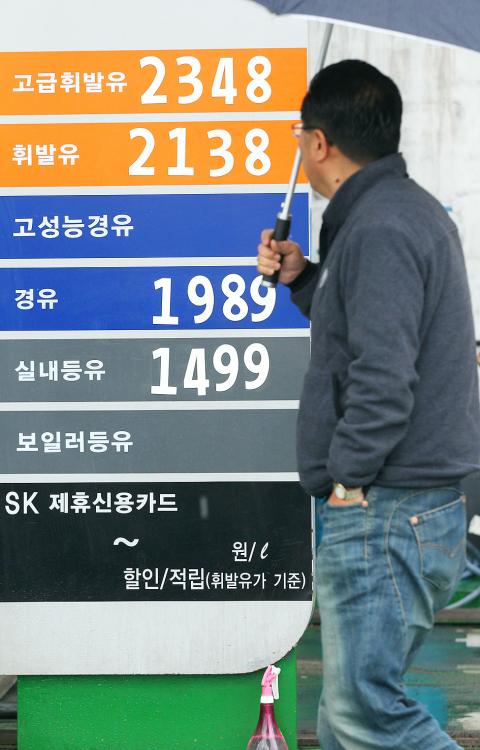
Photo: EPA
Their remarks came after more than a week of turmoil in Libya, with production scaled back by almost 90 percent and many employees fleeing and ships not coming to collect its products.
The seaside Brega complex, about 200km west of the rebel stronghold of Benghazi, collects crude oil and gas from Libya’s fields in the southeast and prepares it for export. It also produces some petrochemicals and refined products for local consumption.
Since the crisis began on Feb. 15, however, General Manager Fathi Eissa said the facility has had to scale back production dramatically from 90,000 barrels of crude a day to just 11,000.
There are no reliable figures about the impact of the uprising against Libyan leader Muammar Qaddafi on Libya’s oil exports, but facilities across the country have been forced to make sharp cuts. Most Libyan ports — the main method of export — also were closed due to bad weather, staff shortages or production outages, according to the International Energy Agency (IEA).
The IEA, citing reports from Western producers, said overall crude production has dropped from 1.6 million barrels per day to 850,000.
“Almost all international oil companies operating in Libya have reported partial or full shut-in of output,” the IEA said a statement on Friday. These companies account for about 72 percent of the North African country’s output. The status of oil fields operated by the National Oil Corp, which accounts for the remaining 28 percent of production, was “still unclear,” the Paris-based agency said.
At Brega, the huge spherical storage containers and reservoirs used to hold natural gas and crude oil are filling up rapidly with no ships to cart away their valuable contents.
Production in the southern fields has been throttled back until Brega can clear some of its capacity.
“At this time, we are operating with the minimum required number of operators, technicians mainly,” Eissa said. “The -production from the fields right now is at minimum, it is not completely stopped, but it is minimum.”
On Saturday, a ship arrived to collect some ammonia and methanol, but it was one of only a few since the troubles began.
The neighboring petrochemical complex of Ras Lanouf, about 100km to the west has experienced similar drops in manpower and has also had to cut production.
Ras Lanouf is also perilously close to the town of Sirte, one of the last holdouts for Qaddafi loyalists in central Libya, raising concern about clashes in the area.
The Gulf of Sidra is critical to Libya’s energy exports. The ports of As Sidra, Marsa el Brega, Ras Lanuf, Tobruk and Zuetina handle about 77 percent of Libya’s oil exports. Allegiances in the Gulf of Sidra and the economic value they represent, therefore, are key to the survival of Qaddafi’s regime.
Many of Brega’s 600 foreign workers — mostly from Britain and other European countries — were preparing to evacuate.
The British frigate HMS Cumberland, which took evacuees from Benghazi to Malta, is set to return to pick up many of Brega’s workers. They missed an earlier evacuation at Benghazi because of the poor state of communications in the country.
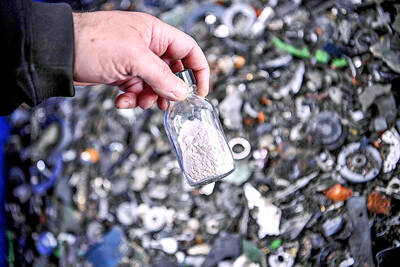
RECYCLE: Taiwan would aid manufacturers in refining rare earths from discarded appliances, which would fit the nation’s circular economy goals, minister Kung said Taiwan would work with the US and Japan on a proposed cooperation initiative in response to Beijing’s newly announced rare earth export curbs, Minister of Economic Affairs Kung Ming-hsin (龔明鑫) said yesterday. China last week announced new restrictions requiring companies to obtain export licenses if their products contain more than 0.1 percent of Chinese-origin rare earths by value. US Secretary of the Treasury Scott Bessent on Wednesday responded by saying that Beijing was “unreliable” in its rare earths exports, adding that the US would “neither be commanded, nor controlled” by China, several media outlets reported. Japanese Minister of Finance Katsunobu Kato yesterday also
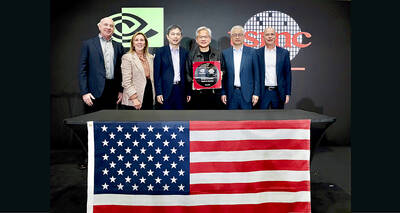
Jensen Huang (黃仁勳), founder and CEO of US-based artificial intelligence chip designer Nvidia Corp and Taiwan Semiconductor Manufacturing Co (TSMC, 台積電) on Friday celebrated the first Nvidia Blackwell wafer produced on US soil. Huang visited TSMC’s advanced wafer fab in the US state of Arizona and joined the Taiwanese chipmaker’s executives to witness the efforts to “build the infrastructure that powers the world’s AI factories, right here in America,” Nvidia said in a statement. At the event, Huang joined Y.L. Wang (王英郎), vice president of operations at TSMC, in signing their names on the Blackwell wafer to
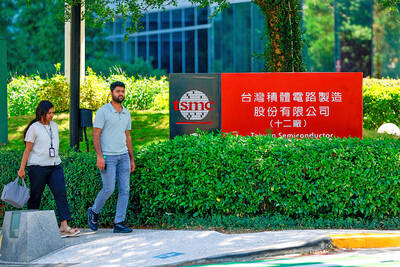
‘DRAMATIC AND POSITIVE’: AI growth would be better than it previously forecast and would stay robust even if the Chinese market became inaccessible for customers, it said Taiwan Semiconductor Manufacturing Co (TSMC, 台積電) yesterday raised its full-year revenue growth outlook after posting record profit for last quarter, despite growing market concern about an artificial intelligence (AI) bubble. The company said it expects revenue to expand about 35 percent year-on-year, driven mainly by faster-than-expected demand for leading-edge chips for AI applications. The world’s biggest contract chipmaker in July projected that revenue this year would expand about 30 percent in US dollar terms. The company also slightly hiked its capital expenditure for this year to US$40 billion to US$42 billion, compared with US$38 billion to US$42 billion it set previously. “AI demand actually
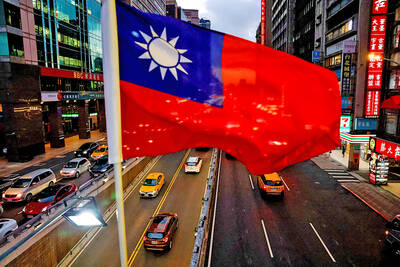
AI BOOST: Although Taiwan’s reliance on Chinese rare earth elements is limited, it could face indirect impacts from supply issues and price volatility, an economist said DBS Bank Ltd (星展銀行) has sharply raised its forecast for Taiwan’s economic growth this year to 5.6 percent, citing stronger-than-expected exports and investment linked to artificial intelligence (AI), as it said that the current momentum could peak soon. The acceleration of the global AI race has fueled a surge in Taiwan’s AI-related capital spending and exports of information and communications technology (ICT) products, which have been key drivers of growth this year. “We have revised our GDP forecast for Taiwan upward to 5.6 percent from 4 percent, an upgrade that mainly reflects stronger-than-expected AI-related exports and investment in the third